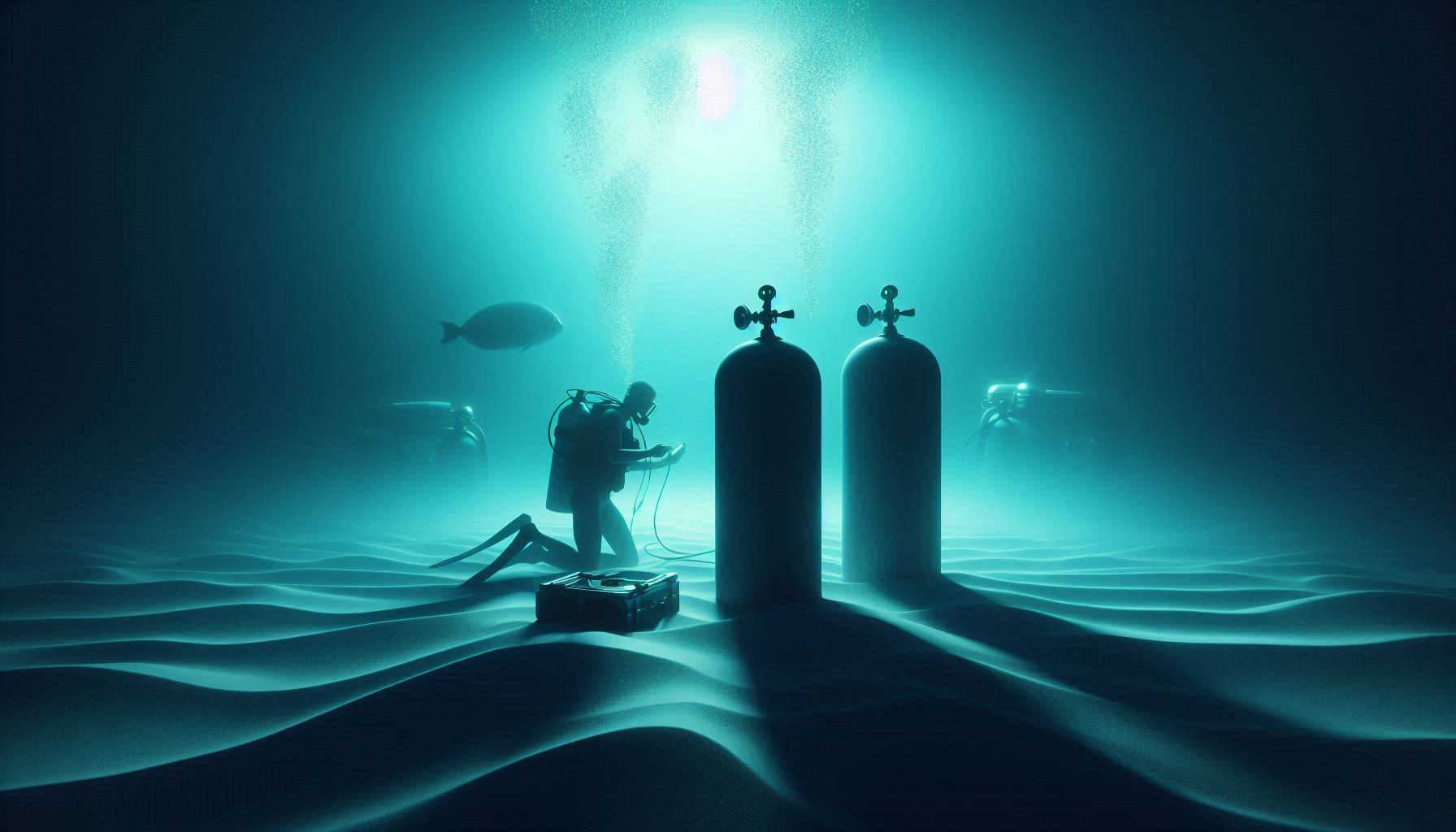
What happens as you breath deeper underwater?
Ever wondered why your air supply seems to vanish faster as you descend deeper into the ocean's depths? It's all about pressure.
When you dive into deeper waters, the surrounding pressure increases due to the weight of the water column above you. This is what we call hydrostatic pressure, and depends on the height and density of the fluid column above you.
Water can be considered an incompressible fluid, thus its density is not influenced by pressure, only slightly by its temperature and molecular composition.
For instance, water density increases with salinity and at colder temperatures. Lowering the water temperature increases its density until it changes phase and becomes ice, causing a sharp decrease in density (a very unique behaviour!).
As you dive deeper into the ocean, considering a constant water temperature, the pressure builds up in a surprisingly simple way: for every 10 meters you descend, you'll feel another atmosphere of pressure squeezing in on you.
Your scuba gear is an engineering marvel that adapts to these changing pressures. Your regulator automatically adjusts to deliver breathing gas at the same pressure as your surroundings.
However, gases, unlike water, are highly compressible fluids. As pressure increases, gas molecules pack more tightly together, increasing density. Thus, the deeper you go the more breathing gas molecules you enhale with each breath!
How to calculate true consumption
Understanding your personal consumption rate is crucial for several reasons:
- It enables accurate dive planning
- Enhances safety margins
- Helps prevent potentially dangerous out-of-air situations.
By normalizing the amount of breathing gas a diver consumes by the diving time and average dive pressure, we obtain the Surface Air Consumption (SAC): a standardized measurement which serves as a foundational metric for calculating a diver true air consumption at various depths.
The SAC represents the volume in liters of breathing gas a diver consumes per minute while at the surface, normalized to one atmosphere of pressure (101325 Pa) and is expressed as
where is the consumed breathing gas expressed in liters, is the dive time in minutes and is the average surrounding pressure of the dive, which can be simply estimated from the average dive depth.
Simple method: ideal gas
A simple way of approaching this estimation can be assuming that the breathing gas behaves like an ideal gas and thus follows the ideal gas law
where is the specific constant of the breathing gas, is the temperature, is the gas density and is the pressure. Assuming constant gas temperature in the tank, the density is correlated to the pressures and thus a good approximation of total consumption is
where and are the initial and final pressures in the air tank.
Advanced method: real gas
In reality, there is no such thing as an ideal gas, rather there are gasses that behave very similarly to an ideal gas for a specific range of thermodynamic conditions. The ideal gas behaviour is characterized by the compressibility factor
being very close to .
Air, nitrox and similar breathing gas mixtures, for instance, behave very similarly to an ideal gas for a wide range of pressure and temperature conditions. For these gasses, the compressibility factor is very close to unity, sometimes slightly lower (at lower pressures) other times slightly higher (for high pressures and a full tank at 200+ atm).
This consumption calculation is reported in the Depthlog calculator as "ideal consumption", using thus the ideal gas law.
While some sophisticated diving calculators try to account for the compressibility factor, they're not telling the whole story. These tools miss two important factors: the way temperature affects gas behavior and the fact that the compressibility is not linear with pressure. This article reports the methodology used by Subsurface and tends to underestimate the true SAC by errors that are sometimes larger than the ideal gas method.
The true mass of consumed breathing gas , assuming real gas behaviour, is defined by the following equation
where the value of the compressibility factor depends on the breathing gas composition, temperature and pressure (Pascal).
The integral of the equation can be numerically solved using a trapezoidal integration approximation assuming that the gas temperature in the tank is constant throughout the dive.
For each pressure segment of the trapezoidal integration routine, the compressibility factor is estimated from a linear interpolation of tabular data obtained using the most accurate equation of state in literature (reduced Helmholtz free energy formulation).
The tables of gas mixture properties, including density and compressibility factor, have been generated for air and Nitrox mixtures at varying percentages of concentration, varying temperatures from 10 to 30 degrees Celsius, and pressures from 0.1 to 25 MegaPascals (1 to 250 bar).
The total mass of breathing gas consumed can then be converted to a volume (in liters) simply by dividing it by its density at sea level static standard conditions
Try the SAC calculator
You can calculate and compare the ideal and true consumptions using our calculator!
What causes my SAC to change?
As divers, we should always be aware of the dive type and conditions when planning it.
For instance, diving in cold waters or against the current can significantly affect our breathing gas consumption because of the metabolic rate increase and physical activity. Both of these increase the oxygen requirement of our body.
It is thus important to calculate our SAC for each dive and then assess how it changes depending on the diving conditions. It is also important to track how our SAC changes over time and over different dives as our consumption is influenced by factors external to the type of dive, such as our experience as a diver, our health condition and our training.
Note that Depthlog tracks your true SAC for every dive over time, you can check the SAC trend in your personal profile dashboard.
Key takeaways
You should try to reduce your average SAC over time!
Tips for doing so include:
- Doing physical activity regularly and keeping a healthy body
- Carefully choose the wetsuit type to avoid feeling cold during dives
- Fine-tune your weights depending on the scuba gear and dive type: being too heavy or too light will cause excessive finning.
About the author
Fabio is a PhD candidate in the Propulsion & Power group of the aerospace engineering faculty at Delft University of Technology.
Passionate about travelling, nature and music, he obtained his first diving certificate in 2010 and since then he's been hooked on this sport. His favourite dive types are shipwrecks and fauna-based dives.


